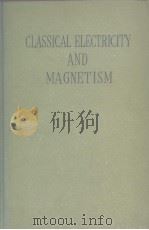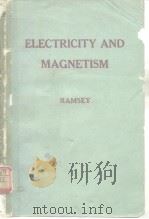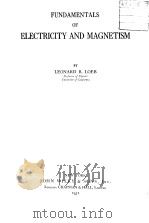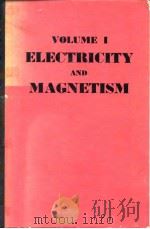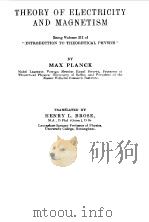《CLASSICAL ELECTRICITY AND MAGNETISM》
| 作者 | WOLFGANG K.H.PANOFSKY 编者 |
|---|---|
| 出版 | 未查询到或未知 |
| 参考页数 | 494 |
| 出版时间 | 没有确切时间的资料 目录预览 |
| ISBN号 | 无 — 求助条款 |
| PDF编号 | 812244358(仅供预览,未存储实际文件) |
| 求助格式 | 扫描PDF(若分多册发行,每次仅能受理1册) |

CHAPTER 1.THE ELECTROSTATIC FIELD IN VACUUM1
1-1Vector fields1
1-2 The electric field7
1-3 Coulomb’s law8
1-4 The electrostatic potential10
1-5 The potential in terms of charge distribution11
1-6 Field singularities13
1-7 Clusters of point charges13
1-8 Dipole interactions19
1-9 Surface singularities20
1-10 Volume distributions of dipole moment23
CHAPTER 2.BOUNDARY CONDITIONS AND RELATION OF MICROSCOPIC TO MACROSCOPIC FIELDS28
2-1The displacement vector28
2-2 Boundary conditions31
2-3 The electric field in a material medium33
2-4 Polarizability38
CHAPTER 3.GENERAL METHODS FOR THE SOLUTION OF POTENTIAL PROBLEMS42
3-1Uniqueness theorem42
3-2 Green’s reciprocation theorem43
3-3 Solution by Green’s function44
3-4 Solution by inversion47
3-5 Solution by electrical images49
3-6 Solution of Laplace’s equation by the separation of variables53
CHAPTER 4.TWO-DIMENSIONAL POTENTIAL PROBLEMS61
4-1Conjugate complex functions61
4-2 Capacity and field strength63
4-3 The potential of a uniform field64
4-4 The potential of a line charge64
4-5 Complex transformations66
4-6 General Schwarz transformation67
4-7 Single-angle transformations70
4-8 Multiple-angle transformations71
4-9 Direct solution of Laplace’s equation by the method of harmonics73
4-10 Illustration:Line charge and dielectric cylinder74
4-11 Line charge in an angle between two conductors77
CHAPTER 5.THREE-DIMENSIONAL POTENTIAL PROBLEMS81
5-1The solution of Laplace’s equation in spherical coordinates81
5-2 The potential of a point charge82
5-3 The potential of a dielectric sphere and a point charge83
5-4 The potential of a dielectric sphere in a uniform field84
5-5 The potential of an arbitrary axially-symmetric spherical potential distribution86
5-6 The potential of a charged ring87
5-7 Problems not having axial symmetry88
5-8 The solution of Laplace’s equation in cylindrical coordinates88
5-9 Application of cylindrical solutions to potential problems91
CHAPTER 6.ENERGY RELATIONS AND FORCES IN THE ELECTRO-STATIC FIELD95
6-1Field energy in free space95
6-2 Energy density within a dielectric98
6-3 Thermodynamic interpretation of U100
6-4 Thomson’s theorem101
6-5 Maxwell stress tensor103
6-6 Volume forces in the electrostatic field in the presence of dielectrics107
6-7 The behavior of dielectric liquids in an electrostatic field111
CHAPTER 7.STEADY CURRENTS AND THEIR INTERACTION118
7-1Ohm’s law118
7-2 Electromotive force119
7-3 The solution of stationary current problems120
7-4 Time of relaxation in a homogeneous medium122
7-5 The magnetic interaction of steady line currents123
7-6 The magnetic induction field125
7-7 The magnetic scalar potential125
7-8 The magnetic vector potential127
7-9 Types of currents129
7-10 Polarization currents129
7-11 Magnetic moments130
7-12 Magnetization and magnetization currents134
7-13 Vacuum displacement current135
CHAPTER 8.MAGNETIC MATERIALS AND BOUNDARY VALUE PROBLEMS139
8-1Magnetic field intensity139
8-2 Magnetic sources140
8-3 Permeable media:magnetic susceptibility and boundary conditions144
8-4 Magnetic circuits145
8-5 Solution of boundary value problems by magnetic scalar potentials146
8-6 Uniqueness theorem for the vector potential147
8-7 The use of the vector potential in the solution of problems148
8-8 The vector potential in two dimensions151
8-9 The vector potential in cylindrical coordinates153
CHAPTER 9.MAXWELL’S EQUATIONS158
9-1Faraday’s law of induction158
9-2 Maxwell’s equations for stationary media159
9-3 Faraday’s law for moving media160
9-4 Maxwell’s equations for moving media163
9-5 Motion of a conductor in a magnetic field165
CHAPTER 10.ENERGY,FORCE,AND MOMENTUM RELATIONS IN THE ELECTROMAGNETIC FIELD170
10-1Energy relations in quasi-stationary current systems170
10-2 Forces on current systems172
10-3 Inductance174
10-4 Magnetic volume force177
10-5 General expressions for electromagnetic energy178
10-6 Momentum balance181
CHAPTER 11.THE WAVE EQUATION AND PLANE WAVES185
11-1The wave equation185
11-2 Plane waves187
11-3 Radiation pressure191
11-4 Plane waves in a moving medium193
11-5 Reflection and refraction at a plane boundary195
11-6 Waves in conducting media and metallic reflection200
11-7 Group velocity202
CHAPTER 12.CONDUCTING FLUIDS IN A MAGNETIC FIELD(MAGNETOHYDRODYNAMICS)205
12-1"Frozen-in"lines of force205
12-2 Magnetohydrodynamic waves207
CHAPTER 13.WAVES IN THE PRESENCE OF METALLIC BOUNDARIES212
13-1The nature of metallic boundary conditions212
13-2 Eigenfunctions and eigenvalues of the wave equation214
13-3 Cavities with rectangular boundaries218
13-4 Cylindrical cavities219
13-5 Circular cylindrical cavities222
13-6 Wave guides223
13-7 Scattering by a circular cylinder226
13-8 Spherical waves229
13-9 Scattering by a sphere233
CHAPTER 14.THE INHOMOGENEOUS WAVE EQUATION240
14-1The wave equation for the potentials240
14-2 Solution by Fourier analysis242
14-3 The radiation fields245
14-4 Radiated energy248
14-5 The Hertz potential254
14-6 Computation of radiation fields by the Hertz method255
14-7 Electric dipole radiation257
14-8 Multipole radiation260
14-9 Derivation of multipole radiation from scalar superpotentials264
14-10 Energy and angular momentum radiated by multipoles267
CHAPTER 15.THE EXPERIMENTAL BASIS FOR THE THEORY OF SPECIAL RELATIVITY272
15-1Galilean relativity and electrodynamics272
15-2 The search for an absolute ether frame274
15-3 The Lorentz-Fitzgerald contraction hypothesis278
15-4 "Ether drag"279
15-5 Emission theories280
15-6 Summary283
CHAPTER 16.RELATIVISTIC KINEMATICS AND THE LORENTZ TRANSFORMATION286
16-1The velocity of light and simultaneity286
16-2 Kinematic relations in special relativity288
16-3 The Lorentz transformation293
16-4 Geometric interpretations of the Lorentz transformation297
16-5 Transformation equations for velocity301
CHAPTER 17.COVARIANCE AND RELATIVISTIC MECHANICS305
17-1The Lorentz transformation of a four-vector305
17-2 Some tensor relations useful in special relativity307
17-3 The conservation of momentum311
17-4 Relation of energy to momentum and to mass313
17-5 The Minkowski force316
17-6 The collision of two similar particles318
17-7 The use of four-vectors in calculating kinematic relations for collisions320
CHAPTER 18.COVARIANT FORMULATION OF ELECTRODYNAMICS324
18-1The four-vector potential324
18-2 The electromagnetic field tensor327
18-3 The Lorentz force in vacuum331
18-4 Covariant description of sources in material media332
18-5 The field equations in a material medium334
18-6 Transformation properties of the partial fields336
CHAPTER 19.THE LIENARD-WIECHERT POTENTIALS AND THE FIELD OF A UNIFORMLY MOVING ELECTRON341
19-1The Liénard-Wiechert potentials341
19-2 The fields of a charge in uniform motion344
19-3 Direct solution of the wave equation347
19-4 The"convection potential"348
19-5 The virtual photon concept350
CHAPTER 20.RADIATION FROM AN ACCELERATED CHARGE354
20-1Fields of an accelerated charge354
20-2 Radiation at low velocity358
20-3 The case of ? parallel to u359
20-4 Radiation when the acceleration is perpendicular to the velocity(radiation from circular orbits)363
20-5 Radiation with no restrictions on the acceleration or velocity370
20-6 Classical cross section for bremsstrahlung in a Coulomb field371
20-7 ?erenkov radiation373
CHAPTER 21.RADIATION REACTION AND COVARIANT FORMULATION OF THE CONSERVATION LAWS OF ELECTRODYNAMICS377
21-1Covariant formulation of the conservation laws of vacuum electrodynamics377
21-2 Transformation properties of the"free" radiation field379
21-3 The electromagnetic energy momentum tensor in material media380
21-4 Electromagnetic mass381
21-5 Electromagnetic mass—qualitative considerations383
21-6 The reaction necessary to conserve radiated energy386
21-7 Direct computation of the radiation reaction from the retarded fields387
21-8 Properties of the equation of motion389
21-9 Covariant description of the mechanical properties of the electromagnetic field of a charge390
21-10 The relativistic equations of motion392
21-11 The integration of the relativistic equation of motion394
21-12 Modification of the theory of radiation to eliminate divergent mass integrals.Advanced potentials394
21-13 Direct calculation of the relativistic radiation reaction398
CHAPTER 22.RADIATION,SCATTERING,AND DISPERSION401
22-1Radiative damping of a charged harmonic oscillator401
22-2 Forced vibrations403
22-3 Scattering by an individual free electron404
22-4 Scattering by a bound electron407
22-5 Absorption of radiation by an oscillator407
22-6 Equilibrium between an oscillator and a radiation field409
22-7 Effect of a volume distribution of scatterers411
22-8 Scattering from a volume distribution.Rayleigh scattering414
22-9 The dispersion relation416
22-10 A general theorem on scattering and absorption419
CHAPTER 23.THE MOTION OF CHARGED PARTICLES IN ELECTRO-MAGNETIC FIELDS425
23-1World-line description425
23-2 Hamiltonian formulation and the transition to three-dimensional formalism427
23-3 Equations for the trajectories430
23-4 Applications433
23-5 The motion of a particle with magnetic moment in an electromagnetic field437
CHAPTER 24.HAMILTONIAN FORMULATION OF MAXWELL’S EQUATIONS446
24-1Transition to a one-dimensional continuous system446
24-2 Generalization to a three-dimensional continuum448
24-3 The electromagnetic field451
24-4 Periodic solutions in a box.Plane wave representation454
APPENDIX Ⅰ.UNITS AND DIMENSIONS IN ELECTROMAGNETIC THEORY459
Tables:Ⅰ-1.Conversion Factors465
Ⅰ-2.Fundamental Electromagnetic Relations Valid in vacuo as They Appear in the Various Systems of Units466
Ⅰ-3.Definition of Fields from Sources(mks system)468
Ⅰ-4.Useful Numerical Relations469
APPENDIX Ⅱ.USEFUL VECTOR RELATIONS470
Table Ⅱ-1.Vector Formulas470
APPENDIX Ⅲ.VECTOR RELATIONS IN CURVILINEAR COORDINATES473
Table Ⅲ-1.Coordinate Systems475
BIBLIOGRAPHY479
INDEX485
《CLASSICAL ELECTRICITY AND MAGNETISM》由于是年代较久的资料都绝版了,几乎不可能购买到实物。如果大家为了学习确实需要,可向博主求助其电子版PDF文件。对合法合规的求助,我会当即受理并将下载地址发送给你。
高度相关资料
-

- THE CLASSICAL THEORY OF ELECTRICITY AND MAGNETISM
- 1937 BLACKIE AND SON LIMITED
-
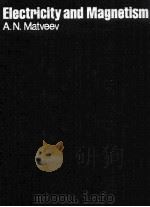
- Electricity and Magnetism
- 1986 Mir Publishers
-
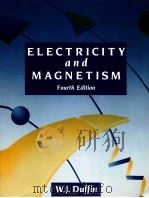
- Electricity and magnetism.4th ed.
- 1990 McGraw-Hill Book Co.
-

- Advanced level magnetism and electricity
- 1954 Edward Arnold Ltd.
-

- MAGNETISM AND ELECTRICITY
- 1944 AT THE UNIVERSITY PRESS
-

- ELEKTRIZITAT
- 1951 SPRINGER-VERLAG
-

- ELECTRICITY AND MAGNETISM VOLUME I
- 1956 UNIVERSITY TUTORIAL PRESS LTD.
提示:百度云已更名为百度网盘(百度盘),天翼云盘、微盘下载地址……暂未提供。➥ PDF文字可复制化或转WORD
